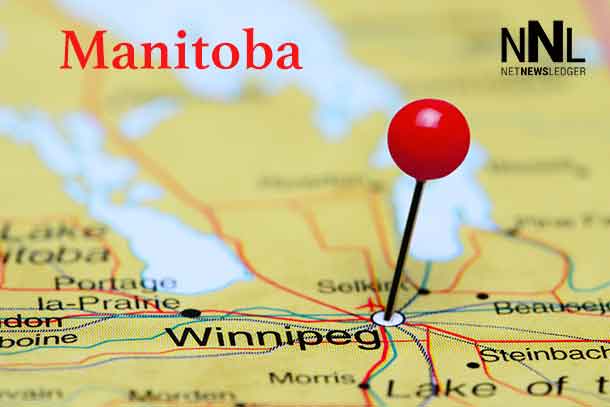Research found that some of the countries receiving the most anti-slavery aid were not the nations estimated to be the most affected by modern slavery
By Kieran Guilbert
LONDON, Sept 13 (Thomson Reuters Foundation) – Patchy, politicised and poorly coordinated aid spending by the world’s top economies to stop modern slavery could hinder a drive to end the multi-billion dollar crime by 2030 and erode public support for such funding, experts said on Thursday.
United Nations research, revealed exclusively by the Thomson Reuters Foundation, found that annual anti-trafficking overseas development aid (ODA) by the 36-nation OECD (Organisation for Economic Cooperation and Development) at least tripled to $434 million from 2000 to 2013.
The United States was the largest donor – accounting for 60 percent of $4 billion pledged in this period – followed by Canada and Norway, and Afghanistan, India and Colombia were the top recipients, according to the U.N. University (UNU) report.
Yet many nations received small or inconsistent sums, raising fears about the effectiveness and sustainability of anti-slavery funding given the dearth of data on its impact.
Modern slavery is increasingly seen as a major global issue, with an estimated 40 million people enslaved, but there is growing scrutiny on how much is spent – and how well – to meet a U.N. goal of ending the $150 billion a year crime by 2030.
“If in 12 years countries can’t show taxpayers what bang has come from their buck, there is every reason to think that people will not want them to keep spending on the issue,” said James Cockayne, director of the centre for policy research at the UNU.
While the research only captured a snapshot of global anti-slavery funding – excluding private sector, philanthropic and domestic state spending – it sets a benchmark for future data to spur countries to better measure their interventions, he said.
“If we don’t know what is being spent, where, by who and how to achieve progress towards (the U.N. target) … then we won’t understand what interventions are effective,” Cockayne added.
“Governments will have to be able to demonstrate where they are preventing people falling into slavery – and how many.”
Although aid is just one prong in the drive to end slavery, major countries from Australia to Britain should spend more if the 2030 goal is to be met, said Nick Grono of the Freedom Fund.
“$430 million a year is significant, but nowhere near enough to make a measurable difference,” said the chief executive of the first private donor fund dedicated to ending modern slavery.
“Yet meeting the U.N. goal is not all about increasing aid,” he added. “It is a question of the political will and priorities of donor countries, and those where slavery is most prevalent.”
PRACTICAL OR POLITICAL?
The data found that some of the countries receiving the most anti-slavery ODA were not the nations estimated to be the most affected by slavery, with aid and trafficking experts suggesting some cash is pledged for political as well as practical reasons.
“Politicisation of this spending would not be surprising … especially as migration is now such a major focus for many countries,” said Nicola Jones, principal research fellow at the Overseas Development Institute (ODI), a British think tank.
Rich nations have been criticised by campaigners for funding aid projects that appear focused on preventing people in poorer countries migrating rather than falling into slavery.
Some of the United States’ top anti-slavery ODA recipients were Colombia, Jordan and Mexico – all long-time U.S. allies – receiving millions of dollars annually, the data shows, yet none rank highly in the Global Slavery Index of hardest-hit nations.
Yet the UNU researchers stressed the research did not cover all forms of anti-slavery aid spending and so did not give a full picture of U.S. funding – whether from the Agency for International Development (USAID) or State or Labor Departments.
The State Department came under fire in 2015 after a Reuters investigation found that U.S. diplomats pressured the office set up to grade global anti-trafficking efforts into inflating the rankings of 14 strategically vital nations in its annual report.
USAID said it would examine the UNU research before deciding whether to comment, while the State Department’s Office to Monitor and Combat Trafficking in Persons said it considers a range of factors in determining where to allocate its funding.
“In addition to political will, these include analyses of where and how other donors are programming; the capabilities and needs of organisations in the field; and the likelihood for sustainability of our efforts,” a senior official said by email.
“Regarding global estimates, there is no exact or conclusive data that accurately reflects the total number of people exploited worldwide.”
The report also found that most countries receiving anti-trafficking ODA, including nations estimated to be rife with slavery like Yemen and Malawi, were granted less than $1 million a year – which the researchers said were “notably small sums”.
“$1 million a year is a drop in the ocean … and would likely push countries to focus on a narrow, punitive approach rather than addressing broader social issues that can lead to slavery,” said Jones of the ODI. “A focus on prevention is key.”
DATA DRAWBACKS
The UNU researchers said the study had limitations, such as the fact the data stops before the 2015 adoption of the U.N. Sustainable Development Goals (SDGs) after which donors – like Britain – pledged large sums, and the omission of non-OECD aid.
Cockayne said aid projects must be more precisely labelled, and called for a comprehensive database of all forms of global anti-slavery spending – not just foreign aid funding – in order to help the world achieve the U.N. 2030 eradication goal.
Many aid projects tackle issues such as migrant labour, child marriage and poverty, all of which can fuel trafficking but may not be classed as anti-slavery initiatives, experts say.
“Figuring out how you identify and define efforts to tackle modern-day slavery is really challenging,” said Ed Marcum, managing director of U.S.-based foundation Humanity United.
“But (the SDGs) have created more transparency, attention and commitment to tackling slavery and forced labour,” he added.
Yet increased anti-slavery spending – aid or otherwise – will have little impact unless governments and companies seek to change a global economy fuelled by exploitation, said Genevieve LeBaron, a politics professor at Britain’s Sheffield University.
“If you are looking at a few billion (aid) dollars to undo the damage of an economy that is fundamentally broken … where corporate profits arise from low-paid, vulnerable and exploited workers – it is grossly insufficient,” the slavery expert added.
(Reporting By Kieran Guilbert, Editing by Belinda Goldsmith Please credit the Thomson Reuters Foundation, the charitable arm of Thomson Reuters, that covers humanitarian news, women’s rights, trafficking, property rights, climate change and resilience. Visit http://news.trust.org)






